Preview Playtime With Gale Force Nine’s Star Trek: Ascendancy
April 11, 2016 by crew
I recently had the opportunity to sit down with John-Paul Brisigotti and try out a demo of the upcoming Star Trek: Ascendancy Board Game. We didn’t get through the full game by any means. The session ran to around two hours and between the set-up, explaining the rules, and chatting about the game, it allowed for around half-a-dozen turns. Also, as I’m going from memory, my apologies if I get anything wrong.
Star Trek: Ascendancy is a ‘4X’ game, so rather than controlling the crew of the Enterprise and heading off on missions, you control one of the civilisations of the setting, and get to head out and explore space. There were four players in total, so we covered the three core box races plus the Cardassians, which I assume are one of the two expansion races due to be released alongside the core box.
The Voyage Begins
Unlike other similar 4X games, the only tiles which start the game on the table are the home world systems. You can even adjust the length of time the game will take by starting with the home systems closer or further apart. Your home planet begins the game producing one of each of the three resources, which are Culture, Research, and Production, you have one starting advancement, and three ships.
Turn order is randomised and on your turn, you get five Command tokens, each of which can be spent to do one from a list of actions. These include moving a ship or fleet two spaces, combining three or more ships into a fleet or vice versa, revealing more cards from your technology deck, and so on.
You can also spend your resources on things like building new ships, new resource nodes to gain more resources on future turns, or buying new advancements, but this does not cost you a Command token, so you can do this on your turn as much as you want.
Exploration
To get out of your home system you just need to move one of your ships by spending a Command token. This creates a space lane of between two and four squares leading out from the system. Each system has a maximum number of space lanes it can have attached to it at any one time. Also, as long as a system only has one space lane attached to it, you can freely swing the system and the lane around like a pendulum to reposition them on the board.
This allows you to do things like keep systems away from another player, put hazardous systems close to them to form a barrier (these essentially require a saving throw every time a ship enters them), or join up one of your systems with one of your opponents’ systems, and thus initiate first contact. As soon as a second space lane is attached, then the system is locked in place.
When a ship reaches the last square of an unexplored lane, a new system is taken from the stack and added to the end of it, and an exploration card placed faced down in the system. These are revealed once a ship enters the system, and come in four flavours: either neutral and having no effect (green), something beneficial (blue), or detrimental (red), or the system is already inhabited by a civilisation (orange).
In the first three cases, once the effects of the card are resolved you can colonise the planet. This involves crashing a ship into it and spending a Culture and a Command. Planets have a resource capacity, and once you’ve colonised it, you can begin building nodes to exploit the resources.
So a planet with one blue and two red lines next to it, can host up to one Research and two Production nodes. Once you’ve built them, these resources are added to the pool you collect at the start of each turn.
If the planet has a civilisation, then you can’t colonise it. Presumably you can destroy and/or subjugate the civilisation, but as the Federation, this was not an option open to me. I had a Prime Directive which prevented me from doing this. Presumably, other civilisations have their own Prime Directive too.
I did, however, have a bonus from my starting advancement to any attempt bring a civilisation into the Federation. Attempting this costs a Culture and a Command, but as I also gained a Culture whenever I encountered a civilisation, then the cost of this was partially offset.
Making Friends & Foes
In the early rounds of the game, each of us set out exploring space and tried to keep ourselves away from each other. I encountered quite a powerful civilisation straight away, but with my bonuses was able to persuade them to join up with the Federation. You can see their face-up card on the system in one of the photos.
I found some planets, crashed a couple of my ships to colonise them, built some resource nodes, and started getting a good resource engine going when the neighbouring Cardassians made first contact. They did this by adding a space lane to one of their systems, and swinging it around to meet up with my home system. You can again see this in one of the photos. The good part of first contact is you get to trade.
You have three trade cards, worth one, two, and three Production respectively, and can trade them with other players from the time you make contact. They gave you extra Production at the start of your turn, and you can freely break them and swap them around as you please. John-Paul placed a lot of emphasis on the ability to backstab and betray your opponent in Ascendancy.
The demo wound down as the turn swung back around to me, with a seemingly friendly Cardassian ship bearing down on Earth. Having destroyed two of my starting three ships to colonise planets, the extra production from the trade agreement was immediately going to get spent on two new ships to convert into a Battle Fleet, just to be on the safe side….
Final (Frontier!) Thoughts
I’m no fan of Star Trek the show, I hadn’t even heard of the Cardassians before playing the demo, but I love this style of game and I was absorbed in it by the time we had to stop. This was a pre-production copy, so instead of card tiles, tokens, and dashboard, it used acrylic pieces cut using Battlefront’s token-making machine, and they looked gorgeous.
Each of us impressed upon John-Paul our desire for a component upgrade expansion in acrylic. The game is due to be released to coincide with the 50th anniversary, and I believe will hit retail at GenCon and a Star Trek con in Vegas around the same time.
If you like Star Trek or 4X games, I definitely recommend taking a look at it.
If you would like to write for Beasts of War then please contact us at [email protected] for more information!
"Star Trek: Ascendancy is a ‘4X’ game, so rather than controlling the crew of the Enterprise and heading off on missions, you control one of the civilisations of the setting, and get to head out and explore space..."
Supported by (Turn Off)
Supported by (Turn Off)
"I’m no fan of Star Trek the show, I hadn’t even heard of the Cardassians before playing the demo, but I love this style of game and I was absorbed in it by the time we had to stop..."
Supported by (Turn Off)









































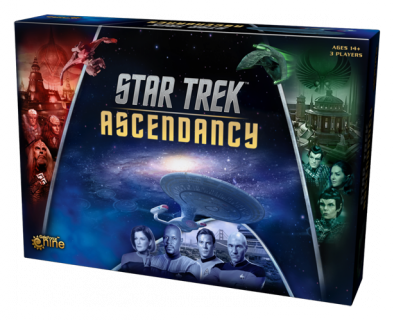
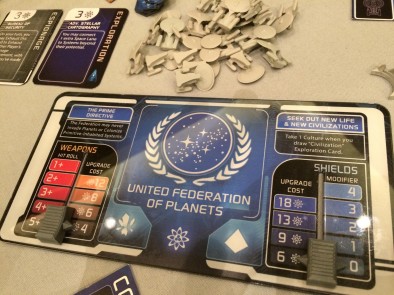
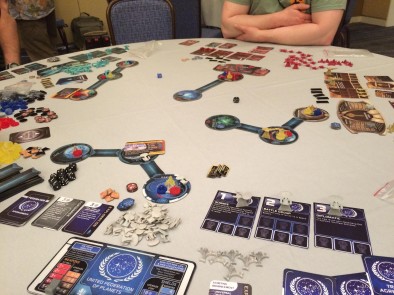
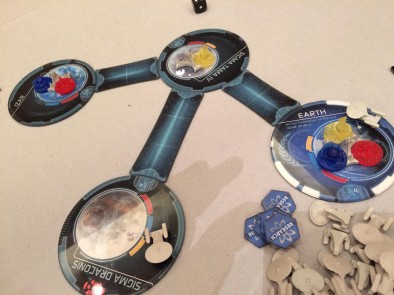
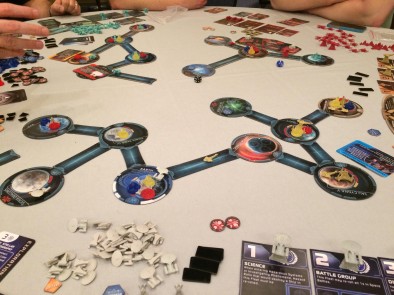

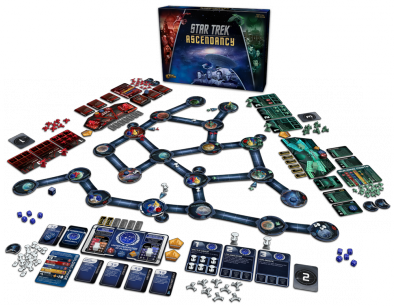


































Would have liked to see a play through Video gives a better feel of the game. But as a fan will probably get the game.
I’ll whip out my iPhone next time lol
I am not a big Trekkie, but I am a big 4X lover so I have this one high on the list
Great stuff and well remembered. Going to have to join the cult of the new and get this one.
Still cant believe you haven’t heard of the Cardassians!
It always sounded like Kardashians to me every time someone said it lol
This game sounds amazing. It’s like Sins of a Solar Empire for the tabletop.
I’m not a huge fan of Star Trek either but the board game seems very nice indeed! That said, it’s not that I dislike ST but I find some other sci-fi tropes even better. But I’ll get the board game, that’s for sure. Can’t have too many sci-fi games in the book (board game) shelf.
Well, we can’t edit our posts so here goes. I also heard JPB mention that there would be events, I think that’s what he called them, involving non player races like the Borg. That sounds really sweet. I also like the prospect of expansions for this game. There are many races which could be made playable and I guess an expansion with a few new races wouldn’t have to be a big box, and thus expensive, expansion either.
I’m getting really excited for this game *insert meme with fat heavy breathing cat here*
That was something mentioned at the table, and I think in the Weekender interview as well. I think the race expansions are going to be one per box and there was mention of Vulcans for next year.
Reminds me of Birth of the Federation on the PC. I’ll keep an eye on this as whilst it appeals I’m not sure how much depth there is to the gameplay.
I would have preffered a Classic Trek themed game, not the Next Gen universe, but I am still impressed with the game.
Are there any Starbases in the game?
I believe there was something along those lines which let you build on a system other than your home system, though I didn’t get far enough in to use them. CBS asked GF9 to produce a game that celebrated all 50 years, so it needed to be all encompassing to fit the remit.
Thanks for the write up …. Definitely looking forward to trying this at Origins!